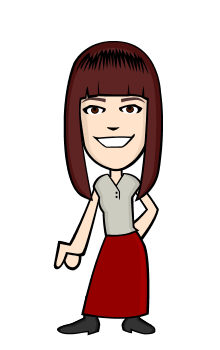There is a thin line between inspiration and imitation. We all know the old adage “Imitation is the highest form of flattery”, but where does it cease being inspiration? I don’t necessarily mean pointing fingers at someone else: art knockoffs, copyright infringement, one musician sounding too much like another – but more inside yourself. What is that tipping point that suddenly turns an honest piece of work into something insincere heading toward the wrong motives?
There is A LOT of flattery in the world of film making (much like that going on in the book world or the art world). We all want to be successful. But can you get there by flattery? Sure. As long is it stands on the side of inspiration and not imitation. Earlier this year a friend sent me a website of photos from a fashion shoot that looked almost exactly like a film I had made two years before. She was looking out for me, but I wasn’t too bothered because they were really beautiful, with enough of the photographer’s own imagination mixed in, that it inspired me again in turn. Whether or not they had actually seen my film remains to be determined. I have had ideas, images, and some actual lines of dialogue “lifted” before, but I can’t say that I’m completely guilt-free. Do I copy other people’s work? No. But I am inspired by so many artists and often want to try what they’ve done.
Currently, I’m working on an experimental film about Beauty and the Beast. Here’s a photo:
I saw an advertizement for the Lytro camera and was quite intrigued by its shifting-focus capability, and thought what an interesting way to tell a story. So, that’s what I’ve set out to do by way of using the inspiration of Lytro technology in a very personal tale drawn from the inspiration of Beauty and the Beast. (Online Nov. 30th) There’s more me in there than there is Perrault or the camera company. But then, no sooner had I finished the photoshop work on the photos I took, than I hopped on Pinterest and saw an image I thought had a similar idea behind it – but maybe captured it better. And I suddenly wanted to go back and re-do my picture, and make it better, make it darker and more intense like the one I had seen online. One that would certainly garner more attention. But I caught myself – that wasn’t the tale I wanted to tell. That photo was Red Riding Hood, mine is Beauty and the Beast. That one is full of violence and fear, mine is a moment on a bright day in the midst of decision and revelation. In my yearn to be better I momentarily got pulled to imitate, but it was my inspiration that pulled me back. I think the line is drawn when the decisions cease being your own.
Sometimes we do find a masque to wear in someone else’s art: Ken Turner’s “TIM” (http://www.filmannex.com/movie/tim/31416) is one of the most sincere, true to oneself tributes I’ve ever seen. It’s a mirror-image to Tim Burton’s “Vincent” while letting us discover Ken Turner as a unique filmmaker. It was a big risk, but it works, because he’s left room in it for himself to come through. And I would have been lost in the “Titania Dream Scene” if it weren’t for Andrew Wyeth and Gustave Dore.
So many artists to aspire to, the world of inspiration is without borders or time constraints. But then again, I’d be absolutely nowhere if it weren’t for my own life and painting that into the portrait.
Lisa
Titania Dream Scene: http://www.filmannex.com/movie/titania-dream-scene/19474
For more on my thoughts about film please visit: http://magazine.after-set.com/ and http://www.filmannex.com/webtv/InByTheEye






